 Torna al Blog
Torna al Blog
Questo articolo non è attualmente disponibile nella tua lingua. Si consiglia un traduttore automatico per l'inglese.
Understanding Support and Resistance in Forex Trading
Ultimo aggiornamento: 08/30/2024
What to know about support and resistance levels
In foreign exchange trading, the ideas of support and resistance are essential, acting as crucial signals for traders to assess market fluctuations and make educated choices. These levels, frequently illustrated as horizontal lines on price charts, assist traders in pinpointing areas where prices might stop and change direction, making them vital instruments in technical analysis.
What is Support?
Support refers to a price point on a forex chart that signifies traders' readiness to purchase, effectively stopping a downward movement. It is the point at which demand begins to surpass supply, leading to a halt in price declines and the possibility of a price reversal. When the price of a currency pair drops to a support level, it indicates that buyers find the price appealing enough to enter the market, resulting in increased demand. This surge in buying activity often prevents further price drops.
For instance, if the forex market is in a downward trend with decreasing prices, traders may identify that the current price is sufficiently low to stimulate buying. As more traders take long positions (buying), demand increases to match supply, stabilizing the price and establishing a support level.
What is Resistance?
Resistance refers to the price threshold at which an advancing market encounters selling activity, leading to a halt in its upward movement and potentially a reversal. This occurs when the supply exceeds demand, as traders perceive that the price has hit a maximum and begin to sell off to secure profits.
For example, in a bullish trend, when the price hits a specific peak, traders may feel that it has become too costly and start selling. This influx of selling activity boosts the supply, equaling or surpassing demand, which can cause the price to cease its ascent and establish a resistance level.
The Role of Historical Prices
Historical prices play a vital role in pinpointing support and resistance zones. These zones frequently align with important highs (resistance) or lows (support) seen throughout history. By examining previous price trends, traders can recognize these critical areas where prices have historically faced challenges in surpassing. When prices near these zones once more, traders closely monitor whether they will serve as obstacles or if the price will break through, potentially resulting in a continuation of the prevailing trend.
The Dynamics of Price Breakouts
When a price point surpasses a support or resistance threshold, it indicates a notable shift in market sentiment. For instance, if the price drops below a support level, it may suggest that sellers have taken control, resulting in further declines. On the other hand, if the price rises above a resistance level, it could imply that buyers are dominating, driving the price upward.
To obtain a thorough understanding of forex price fluctuations, it is crucial to assess overall trends over time. For example, analyzing a forex chart from 2019 to 2022 could uncover a resistance point at 6500 and a support point at 6375. These thresholds assist traders in forecasting potential future price movements based on past trends.
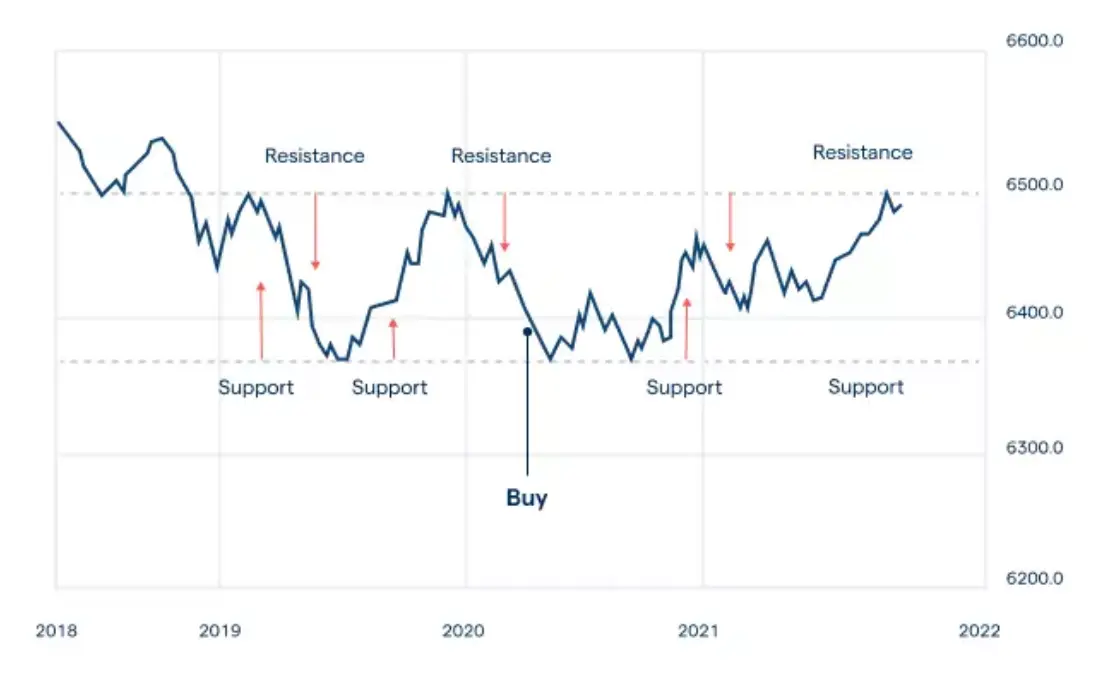
The Importance of Support and Resistance in Trading
Grasping the concepts of support and resistance is vital for establishing stop-loss orders and making informed trading choices. Identifying key levels and observing how prices respond to them offers valuable information regarding the strength of a trend and the general market mood. Traders frequently utilize these levels to decide when to enter and exit trades, aiding in risk reduction and profit enhancement.
Trendlines and Their Role in Forex Trading
Alongside horizontal support and resistance levels, trendlines serve as an important instrument in technical analysis. They are created by linking price points on a chart to show the market's direction—whether it's moving upward, downward, or sideways. These lines assist traders in pinpointing possible entry and exit points in line with the prevailing trend.
Ascending Trendline: Signifies rising prices, where each new peak exceeds the last. Traders may think about entering long positions when an upward trend is present.
- Upward Trendline: Indicates increasing prices, where each subsequent high is higher than the previous one. Traders might consider taking long positions during an upward trend.
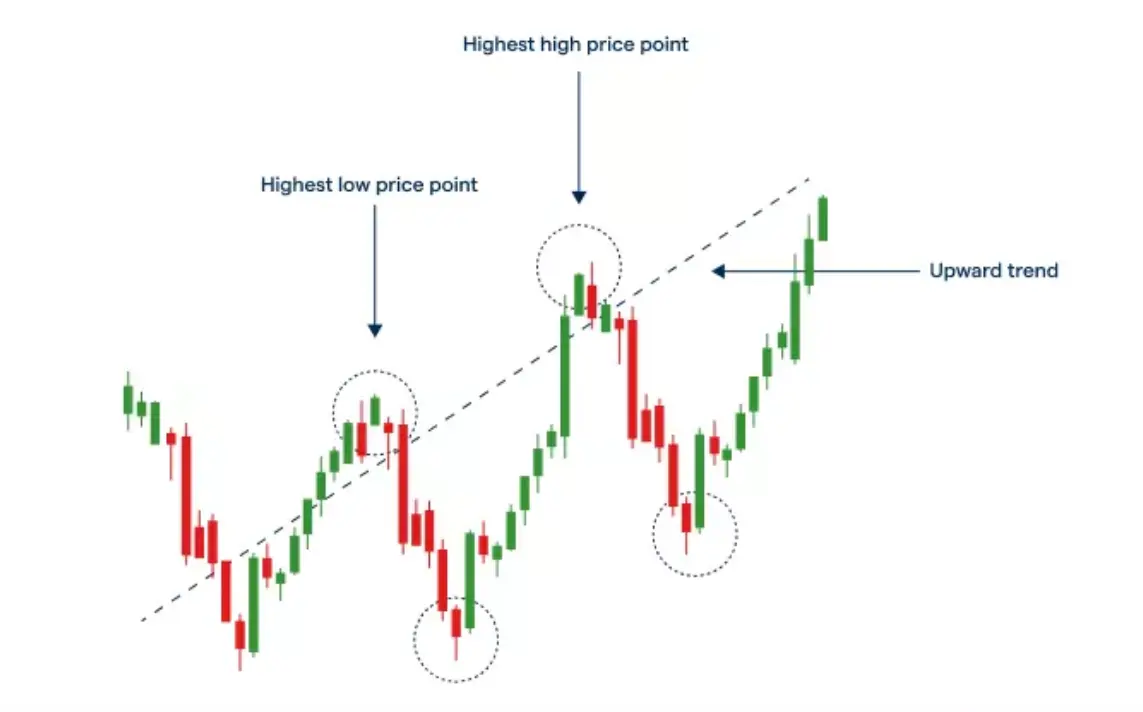
- Downward Trendline: Indicates decreasing prices, where each subsequent low is lower than the previous one. Traders might consider taking short positions during a downward trend.
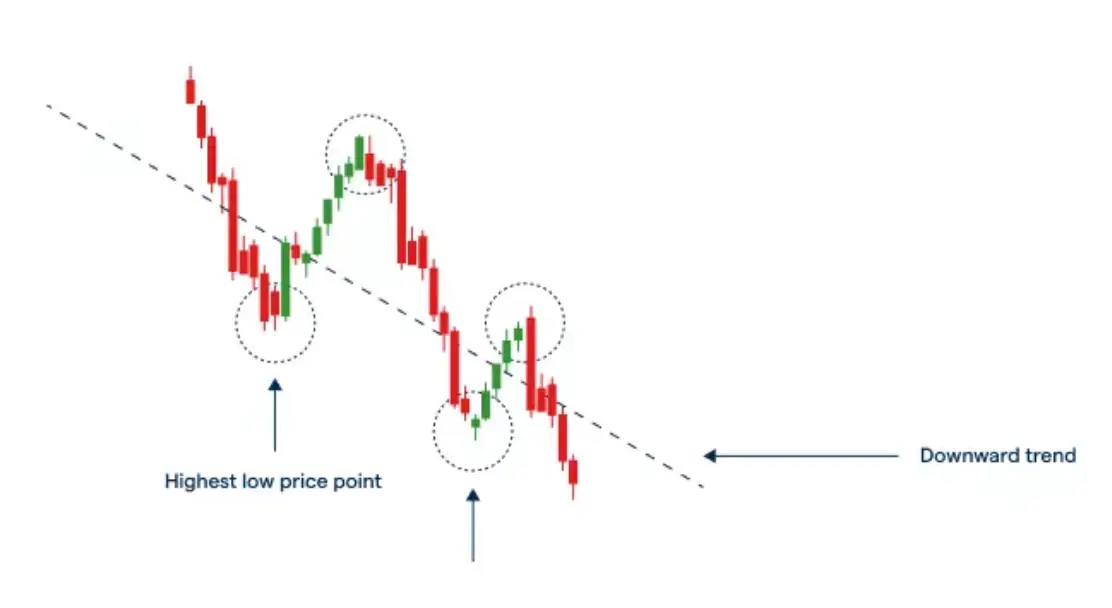
- Sideways Trendline: Indicates little to no significant price movement, appealing primarily to traders focused on short-term market movements, such as scalpers.
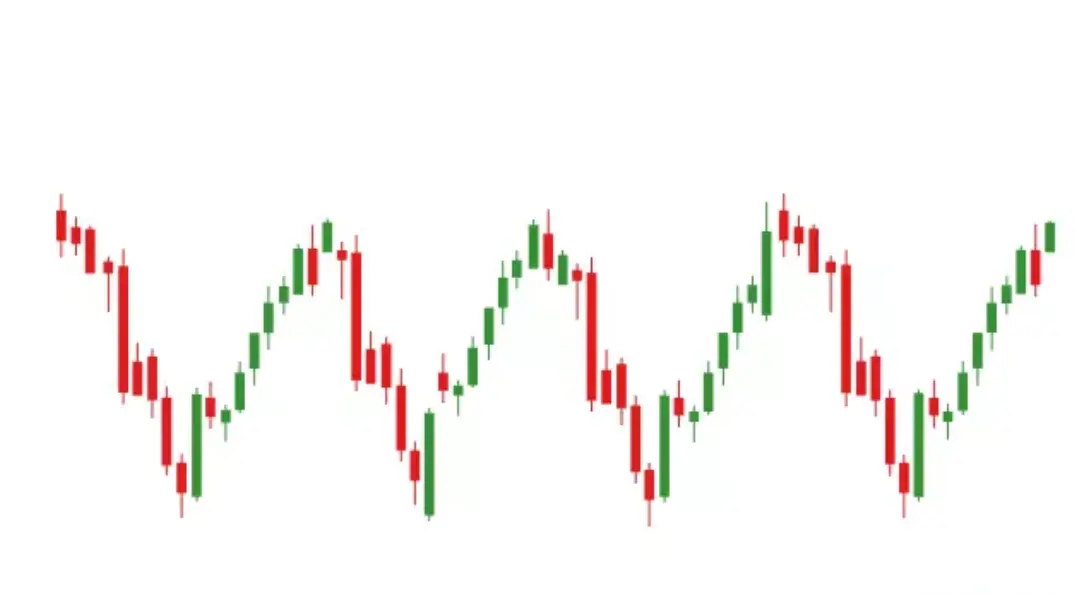
Utilizing Round Numbers and Moving Averages
Round Numbers often act as psychological barriers in the forex market, creating strong support or resistance levels. Traders should be cautious when dealing with round numbers, as these levels can create significant obstacles to price movement.
Moving Averages (MAs) are another key component of technical analysis. These delayed indicators smooth out price data to identify trends over time. When the price is above a moving average, it indicates an uptrend, while a price below suggests a downtrend. The crossover of two moving averages, especially exponential moving averages (EMAs), can signal potential changes in trend direction.
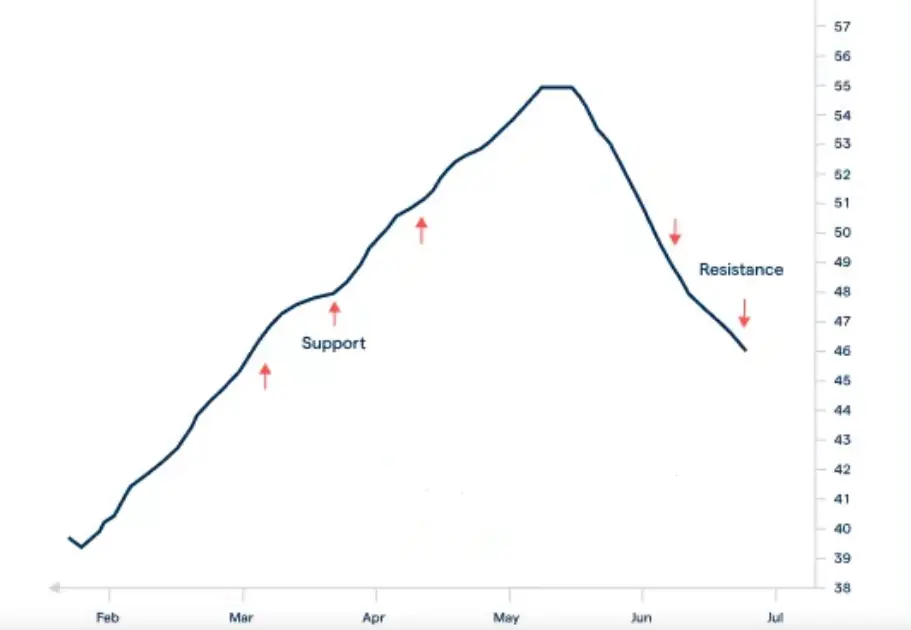
How to Trade on Forex Support and Resistance Levels
Trading on support and resistance levels involves several steps:
Choose a Currency Pair: Identify the forex pair you want to trade.
Create an Account: Open a CFD trading account or practice with a demo account.
Decide to Buy or Sell: Based on your analysis, decide whether to take a long (buy) or short (sell) position.
Manage Your Risk: Set stop-loss orders to manage potential losses.
- Monitor Your Position: Keep an eye on market movements and adjust your strategy as needed.
Trading forex via CFDs (Contracts for Difference) allows you to speculate on price movements without owning the underlying currency. While leverage can amplify profits, it also increases risk, so it’s vital to understand the associated risks before trading.
Conclusion
Support and resistance levels are the building blocks of technical analysis in forex trading. By understanding and applying these concepts, traders can make more informed decisions, improve their trading strategies, and enhance their ability to predict market movements. Whether you're a beginner or an experienced trader, mastering support and resistance is essential for successful forex trading.